How to Crate Train a Puppy in 7 Simple Steps
Published: Last updated: by Jessi Larson Affiliate Disclosure: We hope you love the products we've recommended! As an Amazon Associate we earn a small share from qualifying purchases.If you’re wondering how to crate train a puppy, you’re in the right place. We’ll show you how in 7 easy steps.
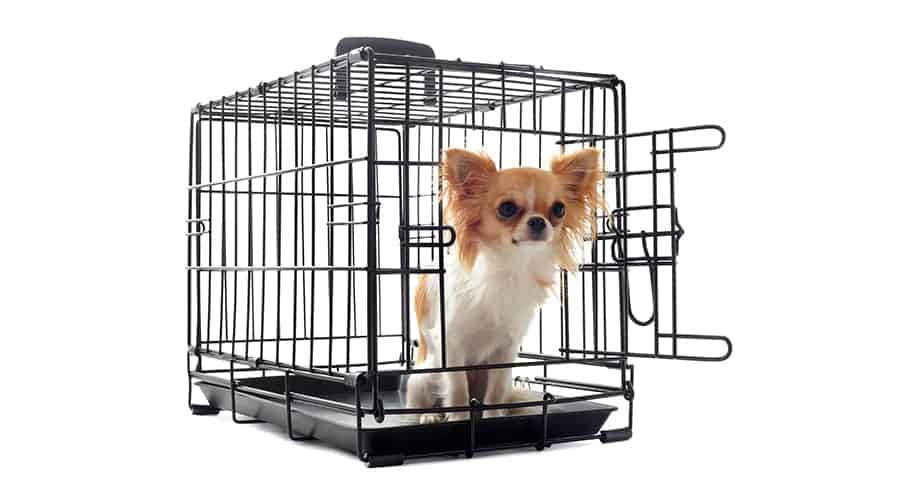
How to Crate Train a Puppy in 7 Steps
Follow these steps and your dog will love its crate in no time.
1. Introduce the crate
To start, place the crate in the room like it’s just another piece of furniture. This will help them get familiar with it and feel like it’s just another part of the home.
Sit down next to the crate and play with your pup, pet their fur, or whatever activity you’re feeling.
Also, keep the door open so the space looks inviting and they can crawl in there whenever they like. Some dogs will start to get curious and climb in and sniff around.
If they don’t automatically go into the crate on their own, however, don’t worry. That’s where the next step comes in.
2. Entice them with a toy or treat
For the next step, grab their favorite toy or a small treat and place it at the back of the crate.
This will encourage them to enter the space and start to feel comfortable inside it.
We recommend smaller-sized treats, like Zuke’s Mini Naturals, so you can practice a number of times in a row and not worry that your dog is over-eating.
3. Use a command
Using a command is also important when you’re learning how to crate train a puppy.
For example, when you want your dog to enter the crate, say a word like “crate” or “kennel.”
The goal is that they’ll enter the crate whenever you say this prompt.
For consistency, use the same word and repeat it every time so your dog clearly understands the expectations.
4. Provide praise
When your dog does go into the crate, pile on the praise! This signals to your dog that they did something right and that you’re pleased with their behavior.
For example, with our dog Toby, we were taught by our trainer to say “Yes!” every time he does something right.
When he was a puppy and entered his crate, we’d exclaim “Yes!” so he knew this was a good thing.
Your approval also gives him a positive connotation with going inside his crate.
5. Always start small
As you work on how to crate train a puppy, the goal is to gradually increase the amount of time they’re in the crate.
At the beginning, just focus on getting them to go inside the crate and start to feel comfortable. Keep the door open and repeat steps 1-4 several times.
The next time you work on crate training, close the door and keep your puppy inside for a minute or two. This will get them comfortable with kenneling and teach them that they will eventually be let out.
When you do open the door, again provide positive praise so they know they did well.
6. Leave and come back
As a next step, you’ll want to leave the room entirely after you feel your dog has become comfortable with the concept of the crate.
This shows to your dog that you’ll leave them alone in the crate but will be back to let them out.
Start by leaving for just a few minutes and then increase the time from there.
7. Extend the time slowly
Speaking of extending the time, experts say you should slowly increase the length of time a dog is kenneled.
You don’t want to introduce them to the kennel and then leave them there for hours. This is scary for a young pup and will lead to unwanted behavior.
Instead, extend their time in a crate bit by bit. Go from 10 minutes to 30 minutes and so forth.
As far as the maximum length a canine companion can stay in the crate goes, Petfinder recommends no more than three hours for a dog under six months. They provide a helpful guide to how many hours a dog can be kenneled by age – I recommend you check it out!
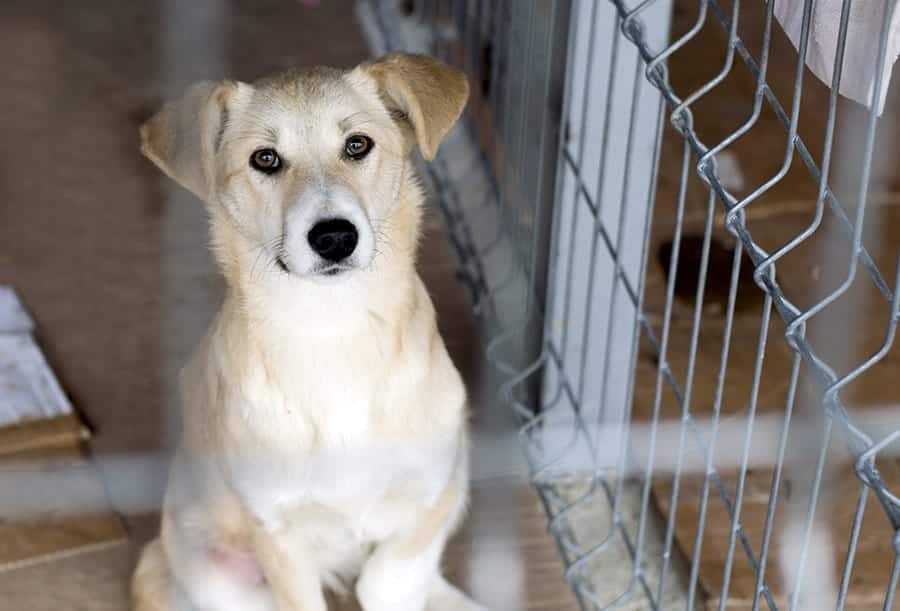
Other Helpful Tips for Crate Training a Puppy
As you research how to crate train a puppy, here are a few more helpful tips and tricks to ensure the process goes smoothly and you’ll see success.
Don’t force the dog inside
Whatever you do, never force your dog inside the crate. This will frighten your furbaby and make them not want to kennel.
A crate should be a dog’s refuge. Getting shoved inside doesn’t exactly scream “I’m entering a safe space.”
We get it that training a dog can be incredibly frustrating. If you feel like you’re at your wit’s end, take a deep breath and count to 10, then return to training.
Make sure the space is comfortable
Another tip: A dog’s crate is their home within a home, so make it as cozy and comfortable as possible!
Add a soft blanket or a nice dog bed so they have a comfy place to lie down. Drop in their favorite toy.
These touches will make it a place they’re happy to be.
Be patient, positive and persistent
They say practice makes perfect, and the same mentality can be applied to crate training.
You’ll definitely have your ups and downs as you figure out how to crate train a puppy. But a positive attitude and patient demeanor will go a long way. So does persistence since repetition is key to training success.
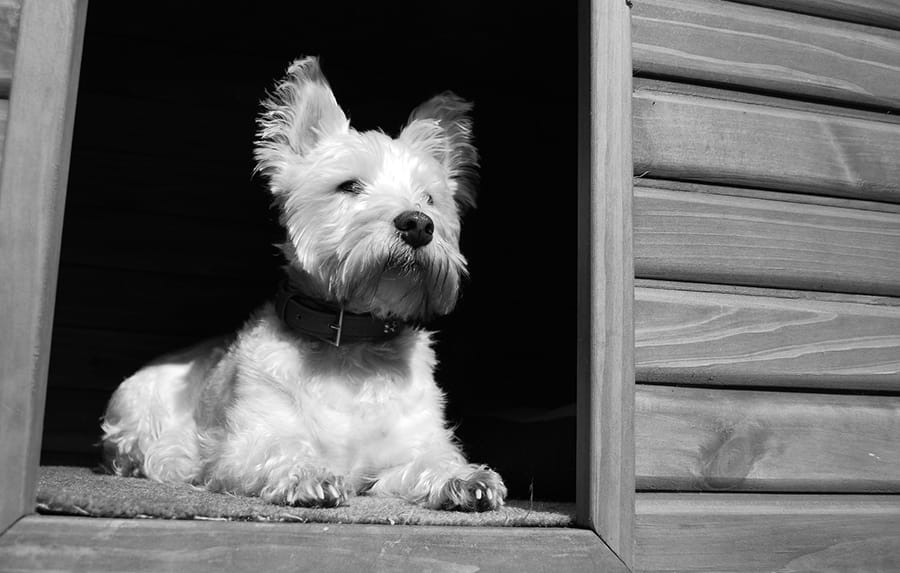
Conclusion: How to Crate Train a Puppy
A crate is essential for so many reasons when you have a canine companion.
For them, it provides the cozy, safe space that they desire based on their animal instincts. If you complete the steps above, a dog will love kenneling and feel like it’s a home all of their own.
And for pup parents, the crate is an essential tool for training, especially when it comes to housebreaking a dog. Best of all, you’ll know your puppy is safe and secure even when you’re not around.
It may seem overwhelming at times, but as you research how to crate train a puppy, remember that a trained dog will make your life so much easier down the road.
And if you need extra support, check out this excellent video from dog trainer Zak George.
Bonus: How to Pick the Best Dog Crate
Picking the right crate is the first step to success when trying to figure out how to crate train a puppy.
Both the size and the type of crate you buy will depend on your dog’s breed, height, weight and activity level.
Find the right size
It’s a bit like Goldilocks and the Three Bears. You don’t want it to be too big or too small. The crate should fit just right.
And how do you know what’s the right size?
According to Petco, the ideal crate should have enough room for your dog to stand up, turn around, lie down and stretch out.
If it has any more space than that, dogs may start relieving themselves inside. (A dog doesn’t like to soil its living area, but with all the extra space, they’ll only use one side and see the other part as fair game for going to the bathroom.)
For many dogs, the size they are as a puppy is much smaller than how big they’ll be when they’re full grown. It’s impractical and expensive, however, to buy them crates that fit for each size and stage.
What do you do?
Think ahead. Buy a crate that will fit your furbaby when they’re full grown, but in the meantime, add dividers to make the space smaller and snug and secure for their current size.
Many crates come with moveable dividers, or you could use a makeshift one like a cardboard box.
Pick the right crate type
Many different types of crates are on the market. What you buy will depend on the size of your dog, where you live and what you’re looking for.
Let’s talk through the different styles to see which one is best for your needs.
Wire Dog Crate
A wire crate is collapsible and can be moved or stored easily. The extra airflow is great for dogs with lots of fur and for those living in warmer climates.
Dogs can see through the crate, but if this causes anxiety or they need a more separated space, you can put a blanket over the top and drape it down the sides.
Plastic Dog Crate
The plastic crate is extra durable and sturdy. They’re great for traveling and allow you to safety transport your pup.
It usually has only a wire door and air vents on the side, otherwise it’s completely enclosed.
Soft Dog Crate
A soft-sided crate is ideal for smaller dogs and is a great option for when you’re on the go.
Other Dog Crates
Although less common, there are other types of crates to check out as well including wood crates that offer an aesthetic exterior that blends into a home and heavy duty crates for dogs that like to chew. (If your puppy likes to chew everything in sight, read our guide to dog mouthing.)
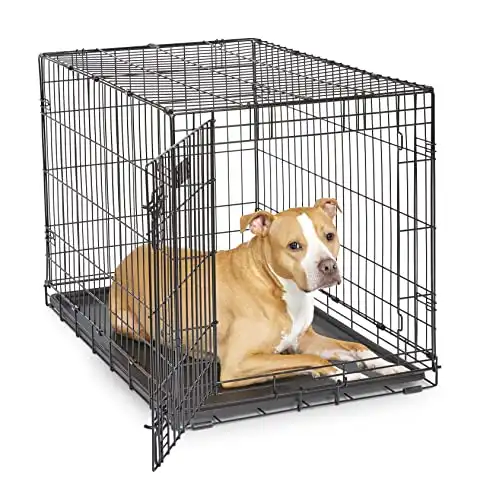
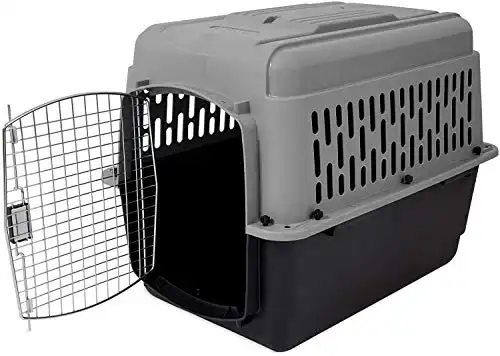
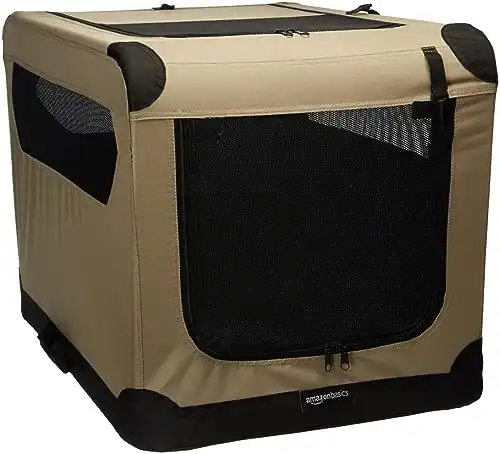
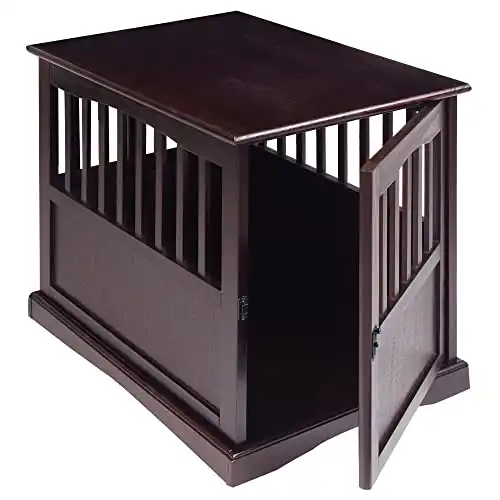



 Getting a New Dog?
Getting a New Dog?
1 Comment
I have been trying to crate train my new puppy and when you close the door, all he does is cry and yelp, and scratch on the wire. He will go in and be ok as long as the door remains open and he can come and go